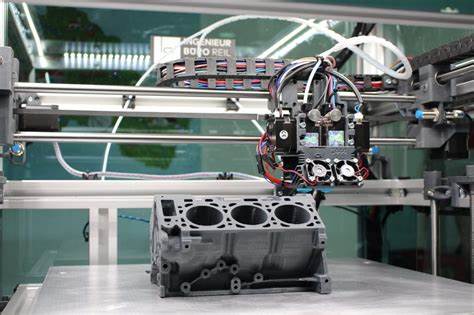A novel 3D printing method called high-throughput combinatorial printing (HTCP) has been created that significantly accelerates the discovery and production of new materials.
The process involves mixing multiple aerosolized nanomaterial inks during printing, which allows for fine control over the printed materials’ architecture and local compositions. This method produces materials with gradient compositions and properties and can be applied to a wide range of substances including metals, semiconductors, polymers, and biomaterials.
The time-honored Edisonian trial-and-error process of discovery is slow and labor-intensive. This hampers the development of urgently needed new technologies for clean energy and environmental sustainability, as well as for electronics and biomedical devices.
“I thought if we could shorten that time to less than a year — or even a few months — it would be a game changer for the discovery and manufacturing of new materials.”
Now Zhang has done just that, creating a novel 3D printing method that produces materials in ways that conventional manufacturing can’t match. The new process mixes multiple aerosolized nanomaterial inks in a single printing nozzle, varying the ink mixing ratio on the fly during the printing process. This method — called high-throughput combinatorial printing (HTCP) — controls both the printed materials’ 3D architectures and local compositions and produces materials with gradient compositions and properties at microscale spatial resolution. His research was published on May 10, 2023, in the journal Nature. The aerosol-based HTCP is extremely versatile and applicable to a broad range of metals, semiconductors, and dielectrics, as well as polymers and biomaterials. It generates combinational materials that function as “libraries,” each containing thousands of unique compositions.
Combining combinational materials printing and high-throughput characterization can significantly accelerate materials discovery, Zhang said. His team has already used this approach to identify a semiconductor material with superior thermoelectric properties, a promising discovery for energy harvesting and cooling applications.
In addition to speeding up discovery, HTCP produces functionally graded materials that gradually transition from stiff to soft. This makes them particularly useful in biomedical applications that need to bridge between soft body tissues and stiff wearable and implantable devices.
In the next phase of research, Zhang and the students in his Advanced Manufacturing and Energy Lab plan to apply machine learning and artificial intelligence-guided strategies to the data-rich nature of HTCP in order to accelerate the discovery and development of a broad range of materials.
“In the future, I hope to develop an autonomous and self-driving process for materials discovery and device manufacturing, so students in the lab can be free to focus on high-level thinking,” Zhang said.











